
Introduction
Errors in Image Intensity
- How images change when smoothed
- Café Wall Illusion
- Spring Pattern
- Waves Pattern
How images change when smoothed
We can think of the images on our eyes as a noisy version of the ideal image signal from the scene. Consider a ray from a point on the scene which ideally should impinge the image at location x. But because of imperfections of the visual apparatus, we can only say that the point in the image is with large probability at location x, with smaller probability it could be at the neighboring location, x+dx, and with even smaller probability at the even farther location, x+2dx. By considering the uncertainties at every image point, it is mathematically like smoothing the image. Therefore, we can create the most likely image the vision system works with by smoothing the image.
Many illusions can be understood from the behavior of straight lines and edges. There are three cases to consider. First is an edge at the border between regions of different intensity, such as black and white.
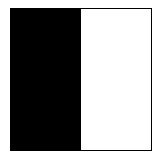
Figure 1: Type 1 Edge
This edge can be represented by a function. The picture below shows the gray value changes from black to white in the horizontal direction.
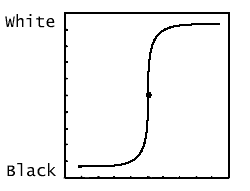
Figure 2
The edge is at the location of the inflection point on the curve, indicated by the black dot. If we were to smooth this image, it would look like this.
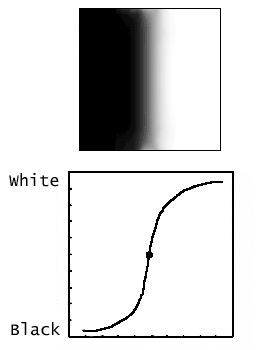
Figure 3

Figure 4: Type 2 Edge
This again can be represented as a function with two inflection points representing the edges at the boundaries of the line and the background regions.
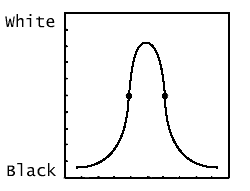
Figure 5
When the image is smoothed the edges drift apart as shown.
. 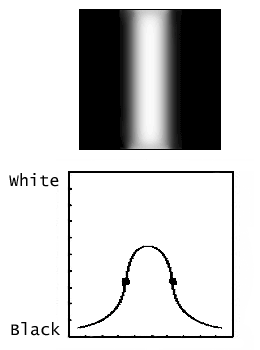
Figure 6

Figure 7: Type 3 Edge
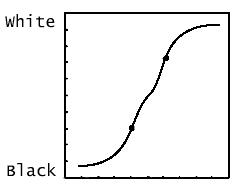
Figure 8
When this image is smoothed the edges at the boundary of the line move toward each other.
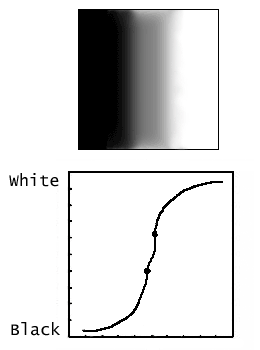
Figure 9